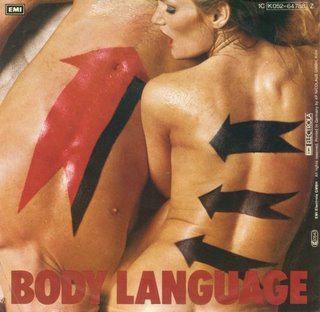Every morning I have a 5 minute walk from the railway station in Den Haag to my work at the "Provinciehuis" (the house of the the provincial administration). Just in front of the Provinciehuis is the busiest traffic junction of Den Haag. It's regulated by traffic lights, and it is always too long a wait before the lights turn green for the pedestrians.
This morning all the traffic lights were switched off. In the middle of the rush hour the police was using the junction as a training site for regulating the traffic manually. While three policemen were doing this, about twenty other policemen and -women were watching the scene from the side. Most of them were waiting on their turn, and a few were making notes of how their colleagues were doing the job. I wasn't to rushed for my work today, so I joined the watchers for a while. The interaction between the policemen and the car-drivers was fascinating. With a simple whistle and an impressive variation of hand signals the policemen succeeded in directing the continuous flow of cars, bikes and pedestrians very effectively. Although most drivers were hardly familiar with the hand signs of the policemen: they mostly did what they were supposed to do. As I was having a better look, I noticed that it was not just the hand or arm signal that made it work: it was the complete body language of the policeman that did the job. Not the performance of the signals in itself, but the body language made the difference between an experienced and a novice policemen.
After work (?!) I had a thought about the hand-, arm- and paddle signals kayakers can use when they are paddling in a group. As in busy traffic, in the surf zone, or elsewhere in windy conditions on the water, you often have problems to make yourself understood. Sometimes the distances are simply too big to hear another. Though seakayakers should be familiar with the basic whistle and arm signals, most of them are not. And if you think they are: each organization (BCU, NKB, SAU, DKV, KNRM etcetera) is using its own standards. Misinterpretation is likely. So it's wise to agree on some standards before you start paddling with your group. And when you have to use a signal: don't forget your body language!
"Body Language": it reminds me of the music of the early eighties. My first association is with an album of Olivia Newton John. But that's wrong. Her album is called Physical, the song "Body Talk". Not quit the best song of Olivia (is she still making records?). The second association is the song "Body Language" from the album "Hot Space" of Queen. That's also not a highlight. As a matter of fact, much music of the early eighties is spoiled by a overproduced artificial disco sound. Artists with great songs in the late seventies made bad songs in the early eighties. So did Queen. Let us forget this musical mistake of a great rock band, but let us enjoy the wonderful cover it was packed with!

1 comment:
Dat van die signalen in het verkeer, wordt niet door iedereen goed begrepen, hoor. Afgelopen zomer heb ik het nog gepresteerd om als fietser de agenten voorbij te crossen met de tekst: "oh, dat betekende zeker dat moest stoppen?!" Inderdaad, mevrouw. Sooooorry. Geen bekeuring gehad. Aardige agenten in Enschede.
Post a Comment